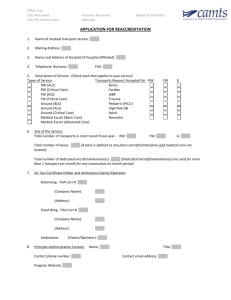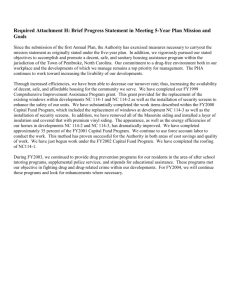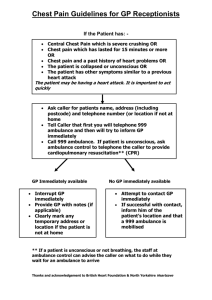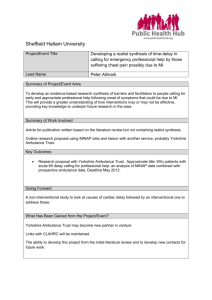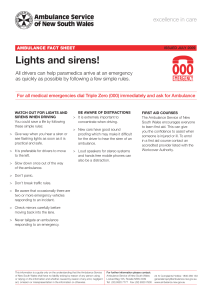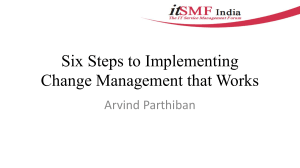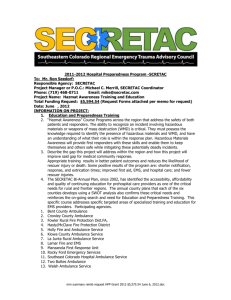Aim - eHealth
advertisement
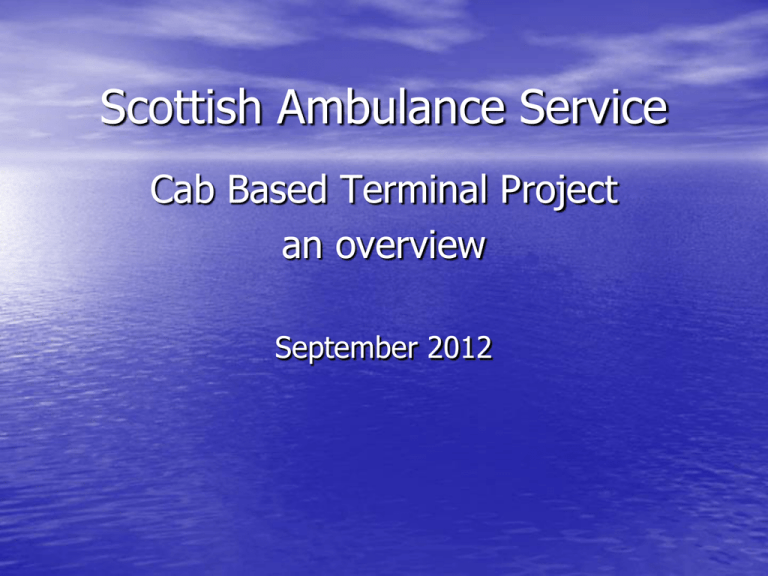
Scottish Ambulance Service Cab Based Terminal Project an overview September 2012 Clinical Background • In 1999, NAO investigated clinical performance of SAS. • Only 49% of A&E incidents had any written record at all. • Clinical Performance was well below acceptable standards. • Improvement was demanded. Project Aim Aim: To implement an appropriate Mobile Data Solution for the Emergency Service, that will enable the right information to be provided to crews, at the right time, at the right place. Background Rules MUST BE; • Easy to Use - Big, bright buttons, simple flow. Never looking cluttered. Must allow free movement across every screen. Must be dictated to, and never dictate. • Functional - People who see it and first use it, must want to use it and keep using it. If they furrow their brow – without input – it’s not right. More facilities can be added when users are happy with the basic system of use. • Patient Centred - Must flow along expected treatment path. This must make it easy to fill in at the time and later. Must help newer staff in suggesting logical & sequential questions or tests along the way, without instructing or hand-holding. Background Rules MUST BE; • Supportive - a) not obstructive – no daft questions, rules, illogical or mandatory screens, or flows that divert from what actually happens. b) Must provide all necessary advice, guidelines, standards, formulae and flowcharts – without insisting that you follow or read them. It is here for you, not vice versa. • Acceptable - People who see it and first use it, must want to use it and keep using it. If they furrow their brow – without input – it’s not right. More facilities can be added when users are happy with the basic system of use. Background Original Concept ePRF SAS ePRF Servers Manual re-keying A&E System A&E Admission Staff/Clinicians Background Vehicle Infrastructure ePacer Screens ePacer Screens cont... Recent Developments Sending the details to the Hospital • The system has been designed to automatically send the ePRF to the hospital when the crew selects the ‘Leave Scene’ button in the Cab. There may be very little data within the ePRF at this time but the document will alert the A&E that an ambulance is on its way to them. • During prolonged journeys, crews can use the ‘Pre-alert’ facility to send further updates to the hospital as they enter further details of the patient’s condition. • A further copy of the ePRF will be sent to the hospital automatically when the crew selects ‘Clear’ within the cab. In most cases this will be the completed document. Benefits: Real-time information, Preparation for patient within A&E, Faster handover from ambulance to hospital Recent Developments Emergency Care Summary Ambulance Service access to the ECS will benefit patients in the following ways: • Medical history often unavailable at scene • Care pathways better informed • Co-morbidities discovered early • Pre-arrival advice available • Advanced directives known • Risk-reduction (e.g. allergies) • Safer clinical decisions • Safer referral to local care Recent Developments Overall System Data Warehouse • Provides clinical performance data immediately • For Service, Division, Station and individual. • Provides Trigger tools and CPI reports. • Allows for simple and targeted audit. Data Warehouse • Allows for simple benchmarking. • Provides data to allow local audit and improvement. • Supports projects aimed at improving service. • Shows equipment/skills needs. • Allows for clinical appraisal. Data Warehouse • Provides evidence for Guidelines and standards. • Allows staff to view their performance. • Supports clinical governance and CQI • Valuable research tool. • Simple review when exceptions are being investigated. 2010 – EHI Best Use of Mobile Technology and Overall UK Winners Next Steps: • • • • • • • • Linkage to intranet Greater connectivity via Ensemble Datix incident reporting Stock requests Manpower organisation Clinical Forum Net sites (Toxbase, BNF, Medline) Audio/video telehealth


